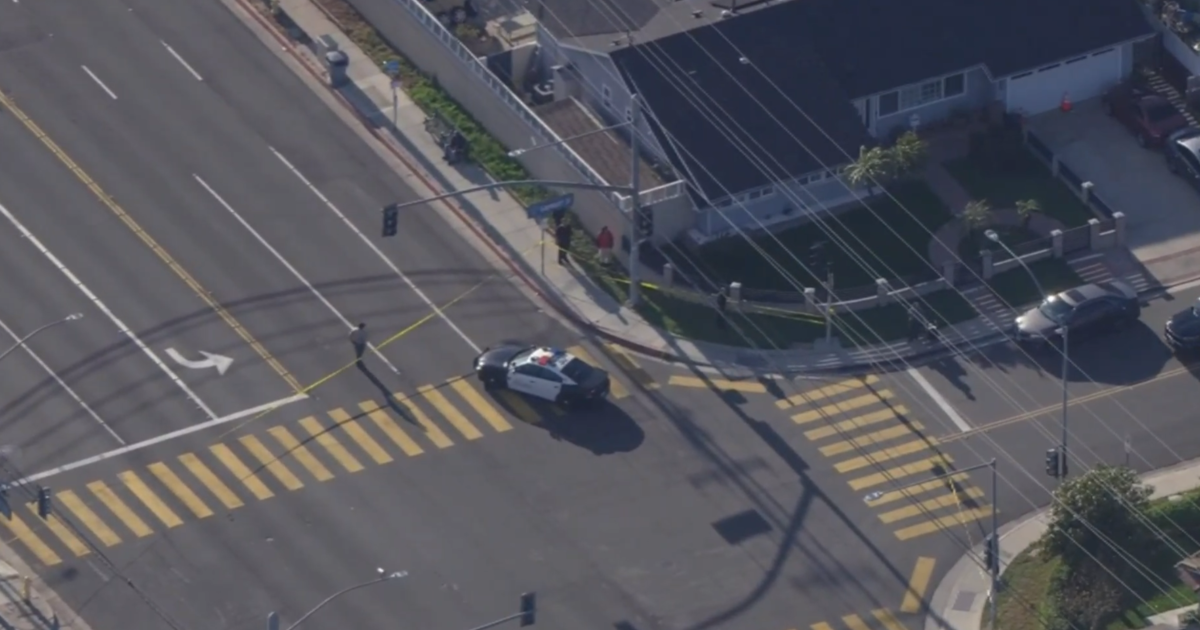Running on Empty: Our Epic Drought
(KNX 1070) — California is at a "tipping point," say leading climatologists, as a historic drought enters its fourth year with no end in sight.
The numbers are both informative and scary: For the first time in 15 years, the entire state finds itself under drought conditions; and our last official "rain year" in Southern California was one of the driest in 500 years, based on an analysis of tree rings. It's "very unusual" to have these extremely dry years, says Lynn Ingram, professor of Earth and Planetary Science at UC Berkeley.
The average household goes through 150 gallons of water per person each and every day, with about half of that being used just to keep lawns green. That is why it is now a criminal offense, subject to a fine up to $500 a day, for wasting water in the state.
Although California Gov. Jerry Brown has declared a drought emergency, it is proving difficult to convince coastal urban water users that this drought is not only very real but also very different from previous ones in recent memory. Water usage in these areas has actually risen, according to state officials charged with monitoring our dwindling water supply.
Part of the reason for this is that Southern California has, according to various experts, done a better job than elsewhere in the state conserving water supplies. But of course, as anyone familiar with the fictionalized account of how Los Angeles managed to "import" (some argue "stole") water from elsewhere, as depicted in the film "Chinatown," knows, Southern California is "conserving" water that really doesn't belong here.
In California, "most water falls in the north and most people live in the south," says Sue McClurg of the Water Education Foundation.
But no matter how good conservation may be in Southern California, the current drought is now greatly impacting the very sources of water that have thus far been so effectively stored. A study by the L.A. Economic Development Corporation concluded that without additional preparation, a major disruption to the supply of imported water could cause Los Angeles County to suffer a devastating impact on both its economy and quality of life.
Of course, the effects of this drought are more readily apparent elsewhere in the state.
By early summer, the water almost entirely ran out for the roughly 13,000 residents in the Montecito Water District near Santa Barbara; water rates were raised and a tough rationing ordinance was implemented that, at least for the time being, is keeping the water flowing.
For Sierra Madre, in the San Gabriel Valley, the drought has proven particularly cruel and ironic: two years ago, it boasted it had some of the best water in all the state, water that originated in mountain sources through horizontal wells.
The water, says Bruce Inman, Sierra Madre's Director of Public Works, met mountain spring water standards. Now, Inman says, the wells had to be shut down because of the drought, and almost all the water for Sierra Madre is being imported from the Colorado River.
The Central Valley, which produces half the nation's fruits, nuts and vegetables, has been hit hard by the drought. "I'm afraid that, at some point, California's going to dry up," says Jim Jasper, who has been growing almonds for more than half a century on two thousand acres in Newman, near Interstate 5. "We've removed 200 acres; we're drying up another 160 acres. I have neighbors doing the same."
McConnell's Fine Ice-Cream, based in Santa Barbara, churns out a premium brand. But the drought is having a huge effect on ice cream's main ingredient: milk. "The drought affects grazing, seed prices for the dairy herds, and, in turn, affects the end product, their milk and cream that we take in here at the dairy," says the ice-cream company's co-owner, Michael Palmer.
In Escondido, near San Diego, the Stone Brewing Company goes through some 100,000 gallons of water each day for its beer. The water that ends up as Stone's beer makes its way from the drying up Colorado River. As the river's water levels decrease, mineral levels rise, making it hard to maintain the unique taste of the beer, says brew-master Mitch Steele. "This is the first time I'm dealing with a pretty serious water shortage as a brewer," he says.
Of course, drought means an increased chance of devastating fires. And, dwindling surface water supplies means it takes firefighting aircraft longer to fly to a water source.
While no one can say how long our current drought will last, history has shown that California has experienced droughts lasting almost two decades. In a state already running on empty, such a prolonged dry spell would have unimaginable consequences.
(The series "Running on Empty: Our Epic Drought," was produced by Charles Feldman and Laraine Herman. Reported by Jon Baird, Margaret Carrero, Pete Demetriou, Ed Mertz, Tom Reopelle and Chris Sedens.)



